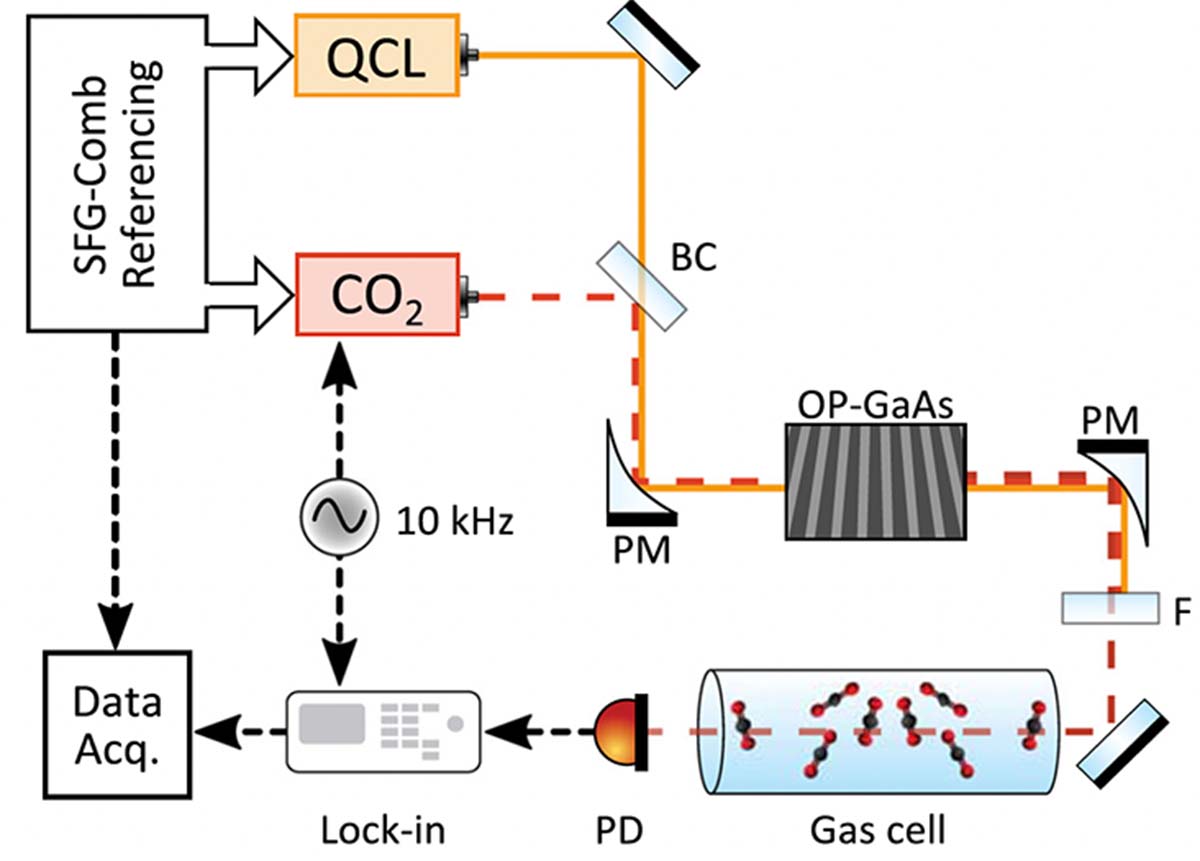

.png?sfvrsn=1b6bae1a_0) (FASTER)
(FASTER).png?sfvrsn=ac211bda_0)

Commercially-available continuous-wave QCLs are not yet able to reach wavelengths beyond 13 μm. However, the 12 – 15 μm region has strong vibrational bands of many important molecules; particularly, this region contains the bending vibrational modes of aromatics. Therefore, we designed and developed our very own laser source to access the long-wavelength region of mid-IR. We employed non-linear spectroscopy, i.e., difference-frequency-generation, between a CO2 gas laser and an external-cavity QCL to generate laser light in the target region. Our work resulted in a US patent filing (Shakfa et al., US Patent Application 2021), a laser development paper in a leading Nature journal (Lamperti et al., Communication Physics 2020) and a chemical kinetics application paper for benzene detection (Shakfa et al., PROCI 2021). This is a highly unique and powerful laser source, and we are going to apply it for many interesting studies of chemical kinetics and environmental monitoring.

COSMOS lab - COmb assiSted MOlecular Spectroscopy laboratory
Politecnico di Milano - polimi